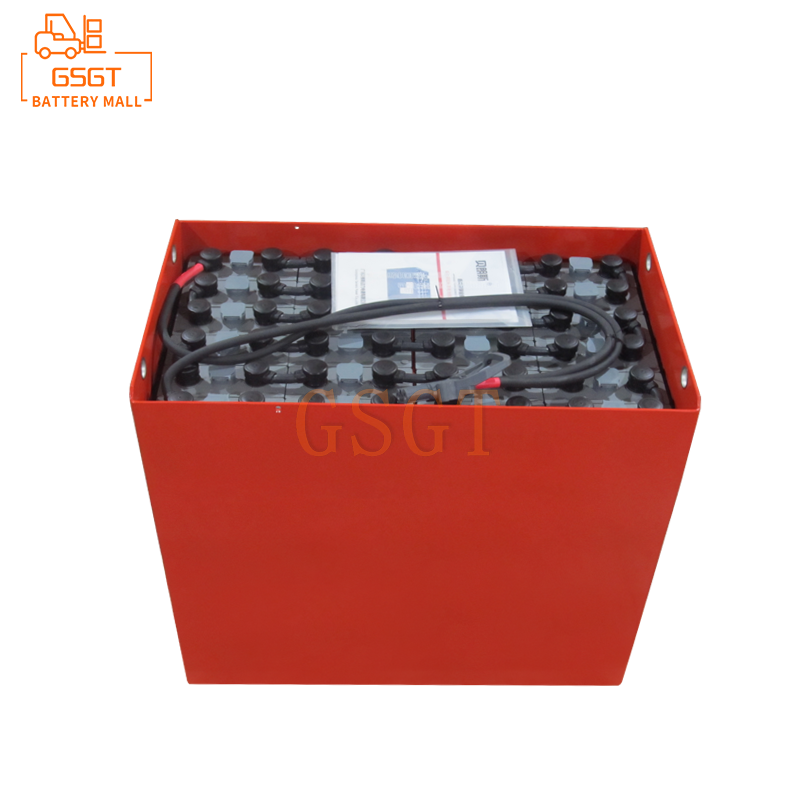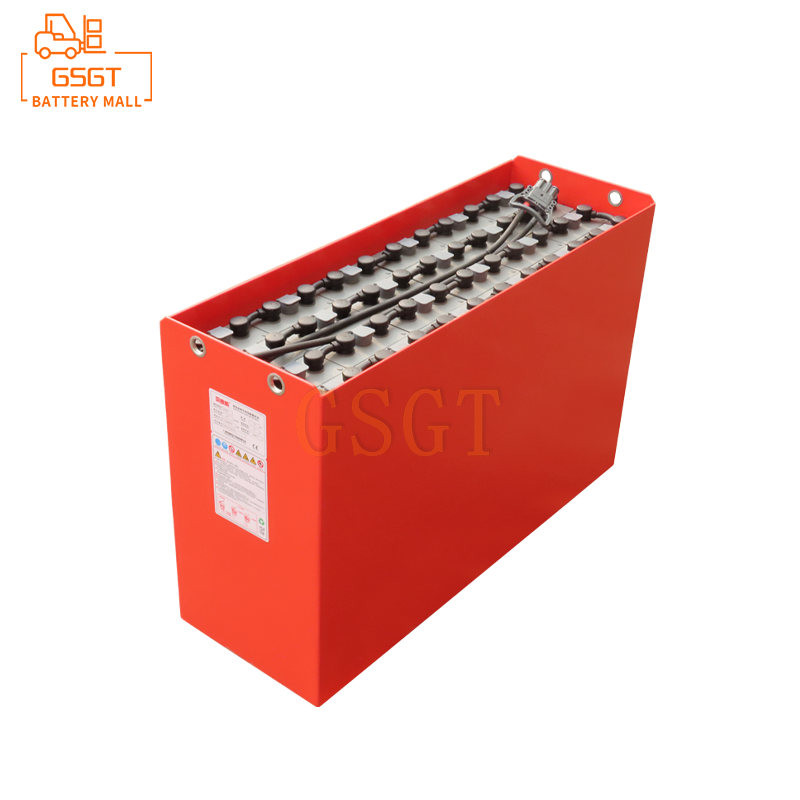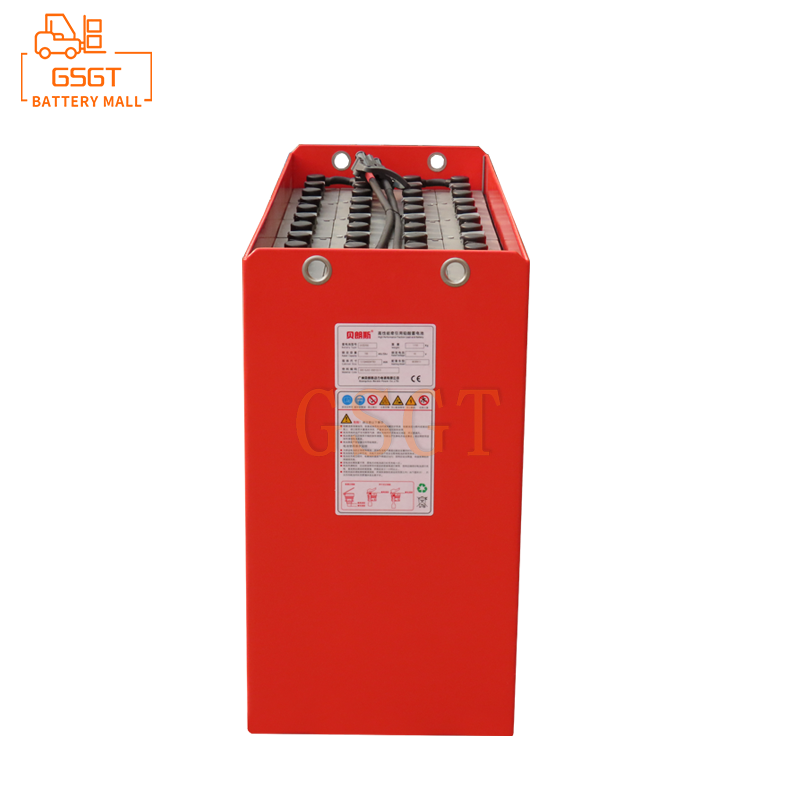Time:2025-05-28 10:16:42
Browse:566
Analysis of Safety Precautions for the Use of Forklift Lead-Acid Batteries
In the field of modern industrial production and logistics transportation, forklifts, as indispensable handling equipment, rely on reliable power systems for their efficient operation. Lead-acid batteries have become the mainstream choice for forklift power sources due to their advantages such as low cost and mature technology. However, during the operation of lead-acid batteries, the conversion between chemical energy and electrical energy is involved. If not handled properly, it will not only affect the battery's service life but also may cause serious safety accidents such as fire, explosion, corrosion and poisoning. Therefore, a thorough understanding and strict adherence to the safety precautions for the use of lead-acid batteries in forklifts is of great significance for ensuring production safety and reducing operating costs.
1. Basic Characteristics and Risk Awareness of Lead-Acid Batteries
Lead-acid batteries are mainly composed of positive and negative plates, separators, electrolyte and casing. During operation, they achieve the mutual conversion of electrical energy and chemical energy through electrochemical reactions. The sulfuric acid electrolyte inside it is highly corrosive, with a concentration usually ranging from 27% to 37%. Once it comes into contact with human skin or eyes, it can cause severe burns. During the charging process of the battery, gases such as hydrogen and oxygen are produced. When the concentration of hydrogen in the air reaches 4.0% - 75.6%, it is very likely to cause an explosion when exposed to open flames, static electricity and other fire sources. In addition, lead and its compounds in lead-acid batteries are toxic and harmful substances. If not handled properly, they can cause long-term harm to the environment and human health.
A full understanding of these characteristics and potential risks of lead-acid batteries is a prerequisite for safe use. Only by clearly understanding where the risks lie can targeted preventive measures be taken in subsequent operations to nip potential safety hazards in the bud.
2. Key Points for Daily Inspection and Maintenance
(1) Visual inspection
Before using the forklift every day, the operator needs to conduct a comprehensive visual inspection of the lead-acid battery. Check if there are any cracks or damages on the battery casing. Once the casing is found to be damaged, stop using it immediately, as a damaged casing may cause electrolyte leakage, which not only corrodes the forklift components but also causes environmental pollution and personal injury. At the same time, check whether the battery connection terminals are loose, oxidized or corroded. Loose terminals can lead to poor contact, affecting battery performance. In severe cases, it may even generate electric sparks, causing fires or explosions. Oxidized and corroded terminals will increase resistance, reduce conductive efficiency and accelerate battery aging. For slightly oxidized terminals, sandpaper can be used for grinding treatment. If the corrosion is severe, the terminals need to be replaced.
(2) Check the electrolyte level
During the operation of lead-acid batteries, the moisture in the electrolyte will gradually decrease due to electrolysis and evaporation. Therefore, it is necessary to regularly check the electrolyte level. Generally, the electrolyte level should be maintained between the upper and lower limit scales marked on the battery casing. If the liquid level is too low, the plates will be exposed to the air, causing sulfation of the plates and reducing the battery capacity and service life. If the liquid level is too high, during the vehicle's operation, the electrolyte is prone to overflow, corroding the forklift components and the ground. When replenishing the electrolyte, distilled water or dedicated lead-acid battery replenishment liquid should be used. Tap water is strictly prohibited as it contains various impurities that can affect the performance and lifespan of the battery.
(3) Battery voltage detection
Regularly using a professional battery tester to measure the voltage of lead-acid batteries helps to timely grasp the health status of the batteries. If the battery voltage is significantly lower than the normal value, it indicates that the battery may have problems such as insufficient charging, internal short circuit or damaged plates, and further inspection and treatment are required. In addition, the discharge performance of the battery can be evaluated by detecting its discharge voltage, and it can be determined whether the battery is suitable for continued use.
3. Charging Safety Regulations
(1) Charging environment requirements
Lead-acid batteries should be charged in a dedicated charging area that is well-ventilated, dry and fireproof. Good ventilation can promptly expel flammable gases such as hydrogen produced during the charging process, preventing gas accumulation and explosion. A dry environment can prevent the battery from getting damp, which may affect its performance and safety. Fire prevention areas should be equipped with corresponding fire-fighting facilities, such as fire extinguishers and fire sand, to deal with possible fire accidents. Clear warning signs should also be set up in the charging area to prohibit unauthorized personnel from entering. Smoking and open flames are strictly forbidden in the charging area.
(2) Selection and Use of Charging Equipment
It is crucial to choose a charger that matches the specifications of the forklift's lead-acid battery. Batteries of different models and capacities have different requirements for charging voltage and current. If an incompatible charger is used, it may lead to overcharging or undercharging of the battery. Overcharging can cause the battery to heat up, bulge and even explode. Insufficient charging will affect the battery's performance and lifespan. When connecting the charger to the battery, first disconnect the battery from the forklift. Connect the charger with the correct polarity to avoid a short circuit caused by reversing the connection. During the charging process, closely monitor the working status of the charger and the temperature changes of the battery. If you find that the charger is abnormally hot or the battery temperature is too high, stop charging immediately and check the cause.
(3) Charging time control
Strictly control the charging time of lead-acid batteries to avoid overcharging and undercharging. Generally speaking, the normal charging time should be determined based on the battery capacity and the degree of discharge, usually ranging from 8 to 10 hours. For deeply discharged batteries, the charging time can be appropriately extended, but it should not exceed 12 hours at most. Overcharging will accelerate the aging of battery plates and the consumption of electrolyte, shortening the battery life. Undercharging will prevent the battery capacity from being fully restored, affecting the working efficiency of the forklift. After the charging is completed, you should first disconnect the charger from the battery, then turn off the power of the charger. Wait for the battery to cool down before using it again.
4. Precautions for Operation and Use
(1) Correct installation and disassembly
When installing lead-acid batteries, it is necessary to ensure that the batteries are stably placed in the battery compartment of the forklift. Use a dedicated fixing device to firmly secure the batteries to prevent them from shaking, shifting, and damaging the battery casing and connection lines during vehicle operation. When disassembling the battery, it is also necessary to disconnect the battery from the forklift first. Remove the connection wires in the order of the negative terminal first and then the positive terminal to avoid generating electric sparks during the disassembly process. When moving batteries, appropriate handling tools such as battery transporters should be used. It is strictly forbidden to move or drag batteries by hand to prevent damage to the battery casing and leakage of electrolyte.
(2) Avoid excessive discharge
Lead-acid batteries should avoid excessive discharge. When the forklift dashboard shows insufficient battery power or the voltage is lower than the specified value, the forklift should be promptly driven back to the charging area for charging. Excessive discharge can cause sulfation of the battery plates, resulting in a decrease in battery capacity. In severe cases, it may render the battery unusable. In addition, frequent over-discharge will also accelerate the aging of the battery and increase the cost of battery replacement. In actual operation, the working hours and charging plans can be reasonably arranged based on the working intensity of the forklift and the capacity of the battery to ensure that the battery operates within an appropriate power range.
(3) Prevent short circuits
During the operation of forklifts, it is necessary to prevent metal tools, debris, etc. from coming into contact with the terminals of lead-acid batteries to avoid short circuits. A short circuit can instantly generate a powerful current, causing the battery to heat up, smoke, and even explode. At the same time, it is necessary to regularly check whether there are any metal debris, liquids or other foreign objects in the battery compartment, and keep the battery compartment clean and dry. If foreign objects are found in the battery compartment, the connection between the battery and the forklift should be disconnected first, and then the foreign objects should be carefully removed to avoid short circuit accidents during the cleaning process.
5. Emergency Response Measures
(1) Electrolyte leakage treatment
In the event of electrolyte leakage, immediate protective measures should be taken, such as wearing acid and alkali resistant gloves, goggles and protective clothing. For a small amount of electrolyte leakage, alkaline substances such as lime and baking soda can be used for neutralization, and then the leakage area should be rinsed with a large amount of clean water. For a large amount of electrolyte leakage, the leaked electrolyte should first be surrounded and adsorbed with adsorption materials such as sand and adsorption cotton, then neutralized with alkaline substances, and finally the adsorption materials and the residues after neutralization should be cleaned up. When dealing with electrolyte leakage, it is important to prevent the electrolyte from splashing onto the skin and eyes. If contact occurs accidentally, rinse immediately with plenty of water and seek medical attention promptly.
(2) Response to Fire and Explosion Accidents
When a fire or explosion occurs with a lead-acid battery, the power supply should be immediately cut off, the personnel on the scene should be evacuated, and the fire emergency response plan should be activated. Use dry powder fire extinguishers, carbon dioxide fire extinguishers and other fire-fighting equipment suitable for extinguishing electrical fires to put out the fire. It is strictly forbidden to use water to extinguish the fire, as water may cause the fire to spread or lead to electric shock accidents. If the fire is too large to be controlled, you should call the fire alarm number 119 in time and seek the help of professional firefighters. After the fire is extinguished, a comprehensive inspection of the accident site should be carried out to identify the cause of the accident. Damaged batteries and forklifts should be properly handled to prevent secondary accidents.
6. Scrapping and Recycling Disposal
When lead-acid batteries reach the end of their service life or suffer severe damage that cannot be repaired, they should be scrapped in accordance with relevant regulations. Lead-acid batteries are classified as hazardous waste. Random discarding will cause serious pollution to the environment. Enterprises should entrust units with the corresponding qualifications to carry out battery recycling to ensure that harmful substances such as lead and sulfuric acid in the batteries are properly treated and reused. When transferring scrapped batteries, relevant records should be made, clearly stating the quantity, model, and reasons for scrapping of the batteries, etc., to facilitate traceability and management.
In conclusion, the safe use of lead-acid batteries in forklifts involves multiple aspects, ranging from daily inspection and maintenance to charging operations, from operation and usage norms to emergency response measures. None of these aspects can be overlooked. Only by fully understanding the characteristics and potential risks of lead-acid batteries and strictly following all safety precautions for use can we ensure the safe operation of forklifts, safeguard the lives of personnel and the production efficiency of enterprises, and at the same time reduce environmental pollution.

$3375

$3405

$3050

$4085

MESSAGE
Professional And Efficient
Security
Affordable Price
Professional Services